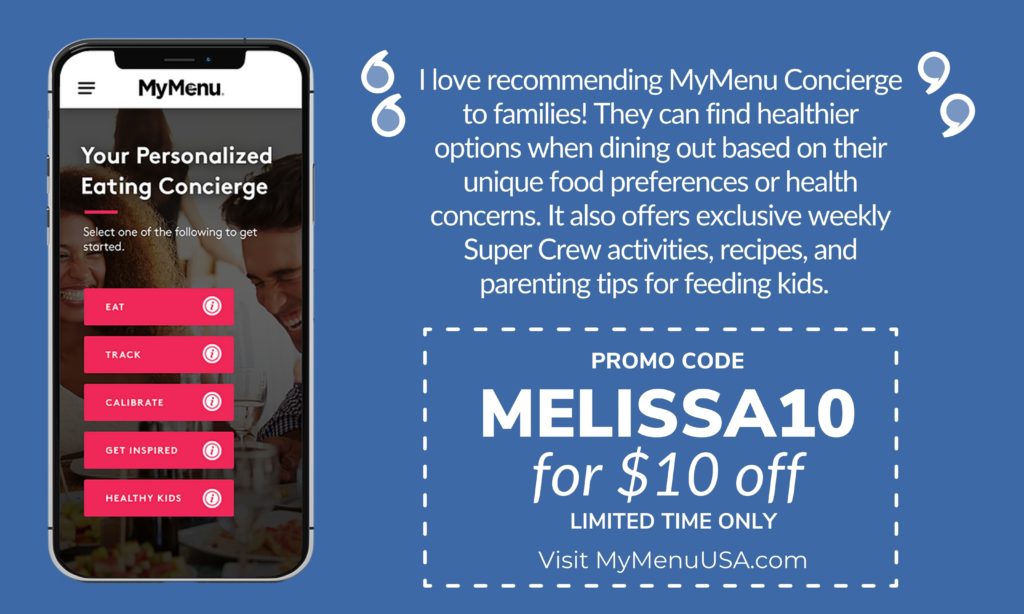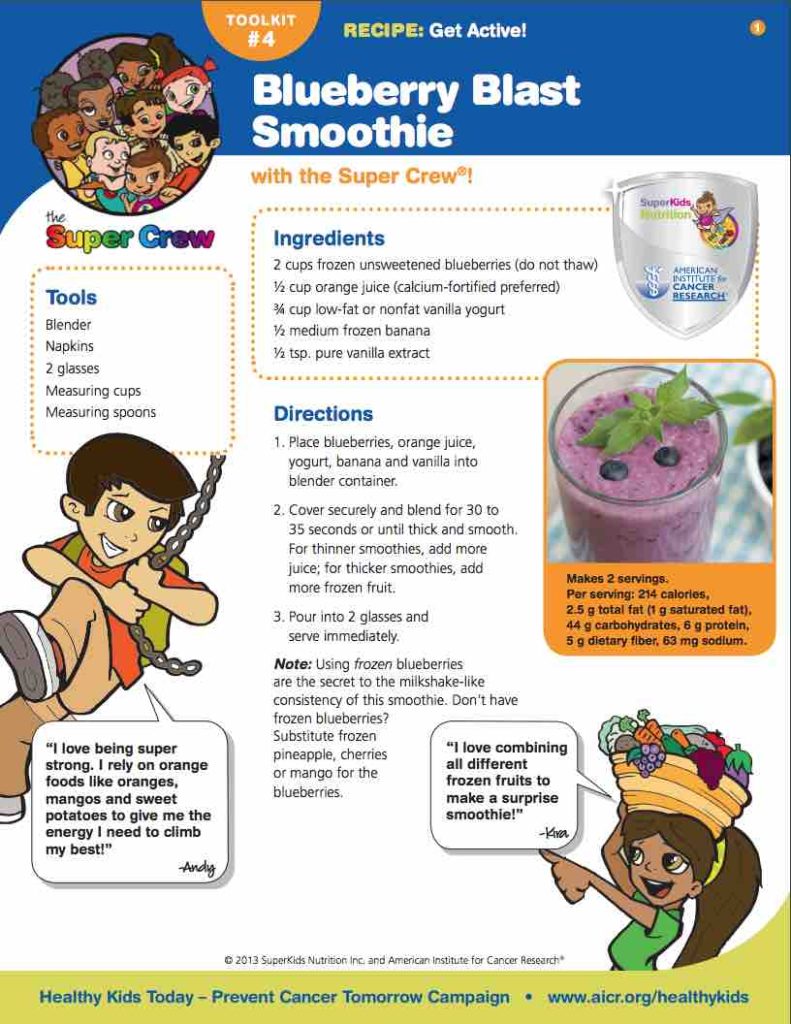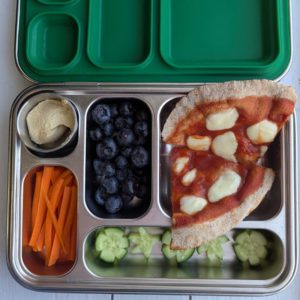
Want to help keep your kids’ minds sharp, their bones strong, and prevent chronic diseases? Learn about the benefits of blueberries!
A blueberry’s sweet taste may make your little ones pop them in one-by-one like candy. But they have SO many more benefits than just being a healthy sweet treat. Blueberries are rich in polyphenols called anthocyanins, which are responsible for their deep blue hue and the majority of their health benefits. (1) They can be found in local farmers’ markets during June and July when they reach their peak season. (1) Or you can find them in grocery stores year-round.
Blueberries are boasting with a number of health benefits for you and your family. Learn more about blueberries’ nutrition, how to choose them, and how to grow them. Plus, get insights into their role in preventing a variety of diseases and health conditions!
Nutritional Benefits of Blueberries
Blueberries are a good source of vitamin C and are high in manganese. They’re also packed with dietary fiber. One cup of blueberries has 4 grams of fiber. (5)
Take a look at our cheat-sheet on fiber to find out how many grams of fiber per day your kid needs. There are many health benefits of eating fiber, such as helping with weight management, helping to control blood sugar and cholesterol levels, and helping bowel movements. (6) There are many different categories of blueberry benefits including:
- Antioxidant properties
- Cancer-fighting powers
- Heart health
- Supporting urinary tract health
- Brain health and memory
- Keep reading for more about each one.
Antioxidant Properties of Blueberries
Blueberries are packed with antioxidants and have more antioxidant capacity than many other berries and fruits. (2) Oxidative stress on our body is associated with aging, heart disease and cancer. So it’s important for you and your family to get your daily servings of blueberries for all of their antioxidant-boosting properties!
Cancer-Fighting Powers of Blueberries
Research is discovering how phytonutrients, or as the Super Crew likes to call them, “fight-o-nutrients,” from blueberries protect healthy cells from damage. Research has evaluated how blueberries may help slow the growth rate of pre-cancerous cells to keep cancer at bay. Blueberries also have flavonoids, a type of phytonutrient that has been shown to decrease the damage to DNA that comes from free radicals in the body. (2) This damage often leads to cancer, so flavonoids play an important role in stopping those free radicals! Protecting your kids’ DNA from an early age can help slow down or prevent cancer cells from growing, leading to adult cancers late in life.
In other words, blueberries have a ton of cancer-fighting properties! Engaging in healthy behaviors from an early age, such as fueling up on cancer-fighting blueberries, is beneficial to our health and they’re delicious. Your child will be pleased to know that sometimes we can have our [blueberry] cake and eat it too!
Blueberries for Heart Health
Blueberries can also help lower cholesterol and make blood platelets less sticky. This may help lower the risk of blood clots and may reduce the risk of cardiovascular disease – a good thing to help prevent starting at a young age! (3) Berries may also help lower blood pressure, make arteries more flexible, and also help protect against UV damage.
Blueberries Support Urinary Tract Health
The benefits of blueberries don’t stop there. As with cranberries, blueberries may help ward off urinary tract infections by preventing infection-causing bacteria from sticking to the walls of the urinary tract. And as you may know or may come to find out, children can and do develop bladder infections. (4)
Brain Health and Memory
And lastly, blueberries are tied to many brain benefits. Anthocyanins found in blueberries are able to cross the blood-brain barrier and may be able to decrease oxidative stress, reduce inflammation, and improve neuron communication within the brain. (1) Blueberries also play a role in preserving memory function and preventing cognitive decline. (2) With all of these brain-boosting benefits, blueberries are a fantastic addition to your child’s daily meal plan!
What Types of Blueberries Should I Eat?
Now that you’ve learned about the many health benefits of blueberries, here’s how you can make this superfood part of your family’s healthy diet.
- Fresh, frozen, dried and juiced (include the pulp) – all types of blueberries are packed with superfood power. Frozen blueberries taste great, cost less, and can be enjoyed all year round. Plus, research also suggests that frozen blueberries are just as nutritious as fresh blueberries. They retain most of the anthocyanins even after harvest. (1) Try adding them to smoothies!
- Wild blueberries – Wild blueberries contain 40% more antioxidant potential than cultivated varieties, so try living on the wild side!
- Blueberry Juice – If choosing blueberry juice, try to avoid the brands with added sugars or mixed with other juices.
- Dark Blueberries – The darker the color, the more anthocyanins and the higher the antioxidant potential. Anthocyanins are one of the Super Crew’s favorite phytonutrients and are the antioxidant coloring compounds that make blueberries blue. Check out their favorite blue smoothie!
How Do I Choose Blueberries?
- When buying fresh berries, choose ones that are firm, uniform in size, and indigo blue with a silver, powdery look.
- Rinse thoroughly just before serving. While best eaten right away, they will keep refrigerated for up to 5 days.
How Much Do I Need to Eat?
- A 1/2 cup serving 3 to 4 times per week will help maximize body defenses.
How to Grow Blueberries
In North America, it is best to plant blueberry bushes in early spring (most likely around the beginning of April through May). Blueberries are harvested between June and August – any time during a sunny summer! (8, 9) For step by step directions of how to grow blueberries and for fun drawing activities for you and your kiddo, you can buy your own copy of The Super Crew’s Breakfast Cookbook! Best of luck with your blueberry adventures!

What Are Some Tasty Treats to Reap the Benefits of Blueberries?
In Meals:
- Make into smoothies, then freeze extra in popsicle molds. Mix frozen berries with grape juice for super sweet popsicles.
- Add dried or fresh blueberries to salads. Like this blood orange, fennel salad.
- Add to your smoothies. Add 1/3 cup of frozen blueberries to your breakfast smoothie including ½ cup of spinach, ½ banana, ½ cup of Greek yogurt, and a ½ cup of your choice of milk!
- Bake with them! Homemade baked goods, jams, pies, whole grain pancakes, smoothies and as a topping on low-fat frozen yogurt. Keep an eye on the amount of sugar and fat used in each recipe.
- Consumption of blueberries in this form (with the extra fat and sugar) may “cancel out” some of the natural benefits of blueberries. Remember, blueberries are naturally sweet, so you won’t need the added sugar anyway!
- Cooking blueberries at 350 degrees Fahrenheit or higher may damage the polyphenols that are responsible for all the wonderful benefits of blueberries, so try to keep baking with blueberries at a minimum! (1)
As Snacks and/or Desserts:
- Briefly microwave frozen berries with other frozen fruit. Add to plain yogurt, topped with walnuts and cinnamon to start your day the antioxidant way! And if you like a little crunch in your yogurt, you can add your frozen berries directly from the freezer, skipping the microwave altogether!
- Make a blueberry salsa. Instead of a mango or peach salsa to accompany fish or chicken, try experimenting with a blueberry base salsa.
- Make a fruit chutney. Chop dried blueberries in a blender along with almonds and raspberry jam to make a fruit chutney – tastes great on top of a sweet potato or with ricotta on toasted whole-grain toast.
- Eat them whole or halved. Blueberries make a great snack for toddlers or preschool-aged children. For infants, cut them in half, or use the smaller wild variety (you can likely find them frozen.)
- Eat as a school snack. Pack them for your child’s snack or in their lunch box in a small reusable plastic container. This helps prevent squished blueberries.
- Make a frozen sorbet. Blend frozen blueberries with a frozen banana, a tablespoon of orange juice, and a dash of cinnamon to create a delicious frozen sorbet.













